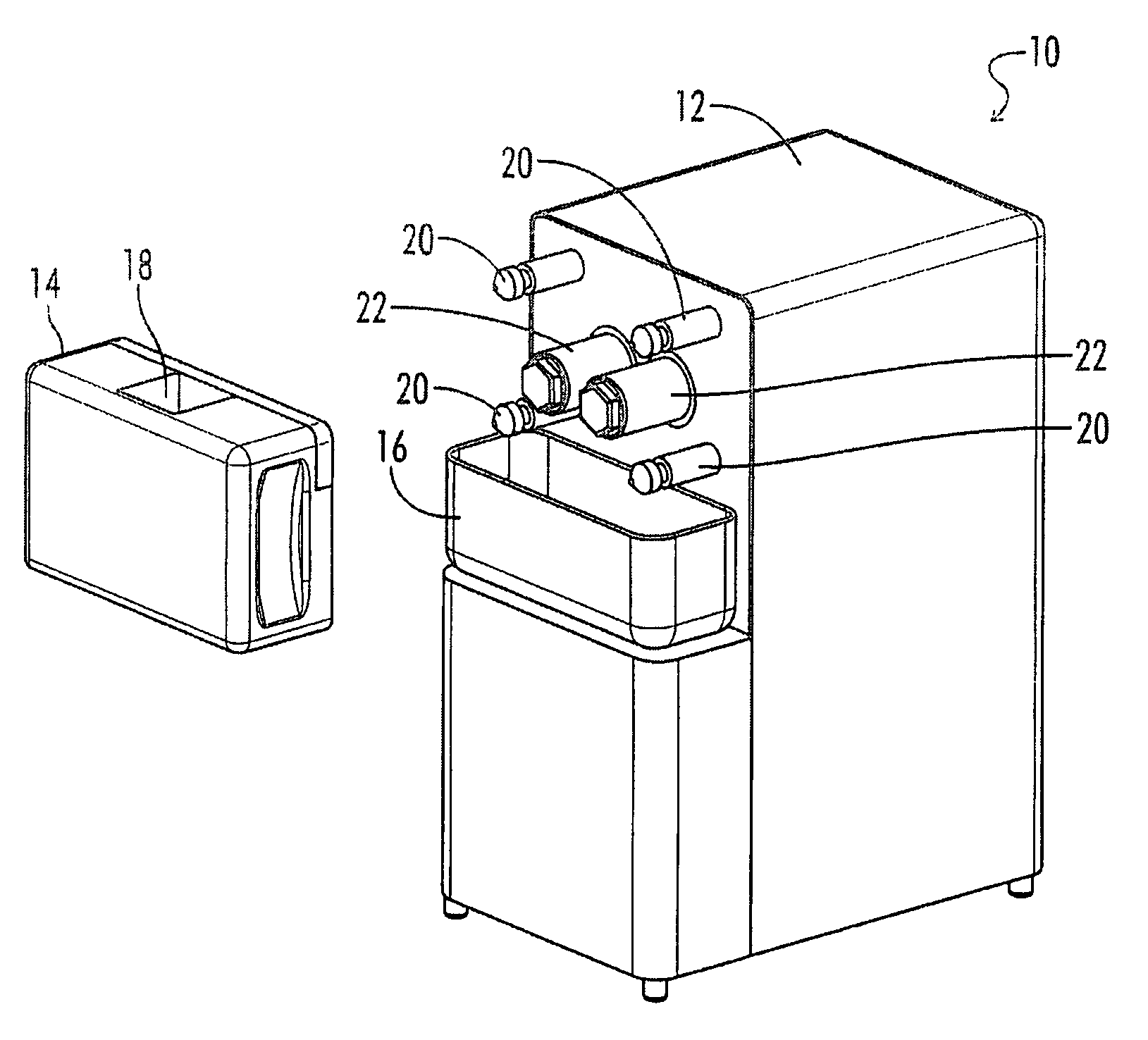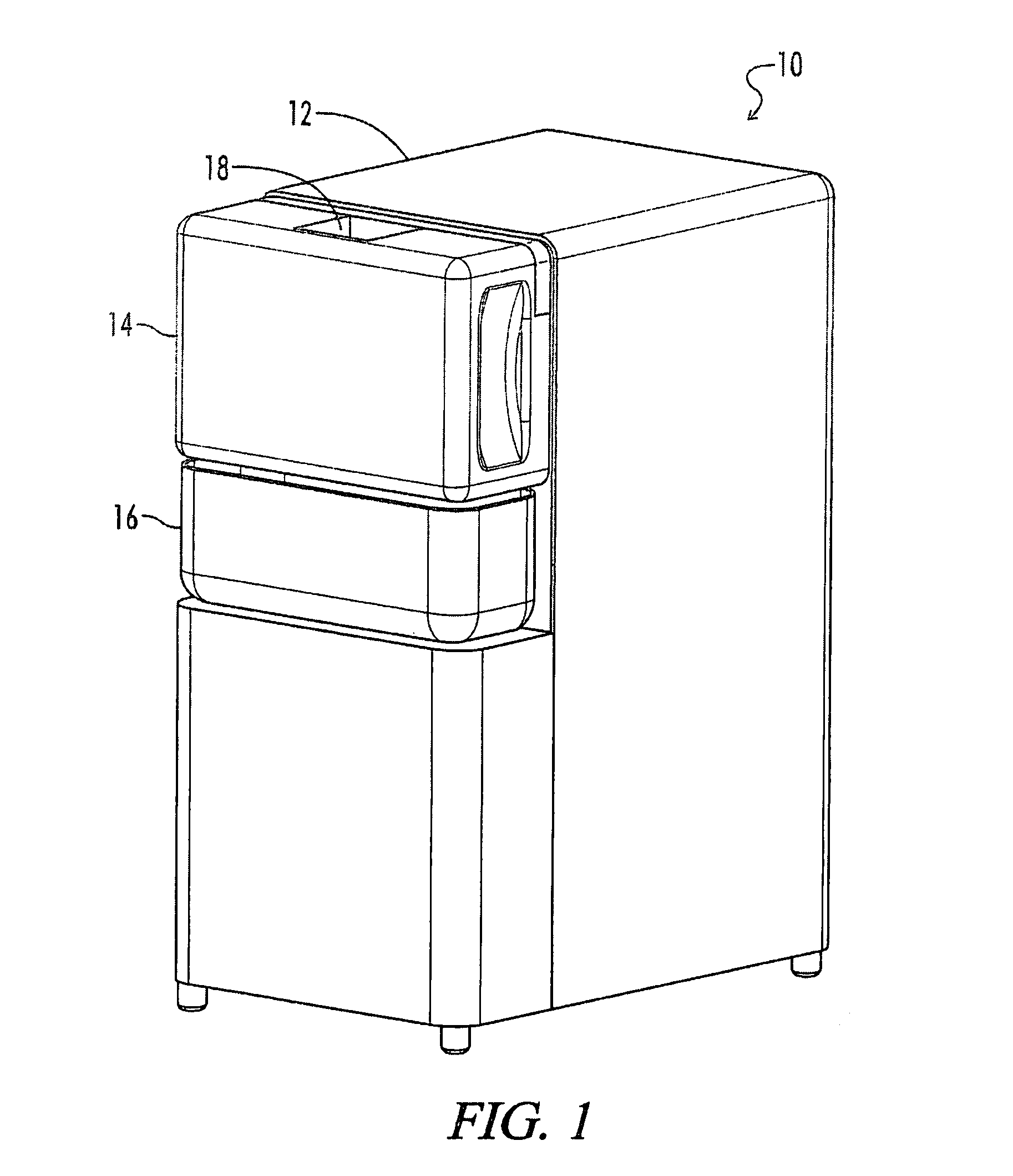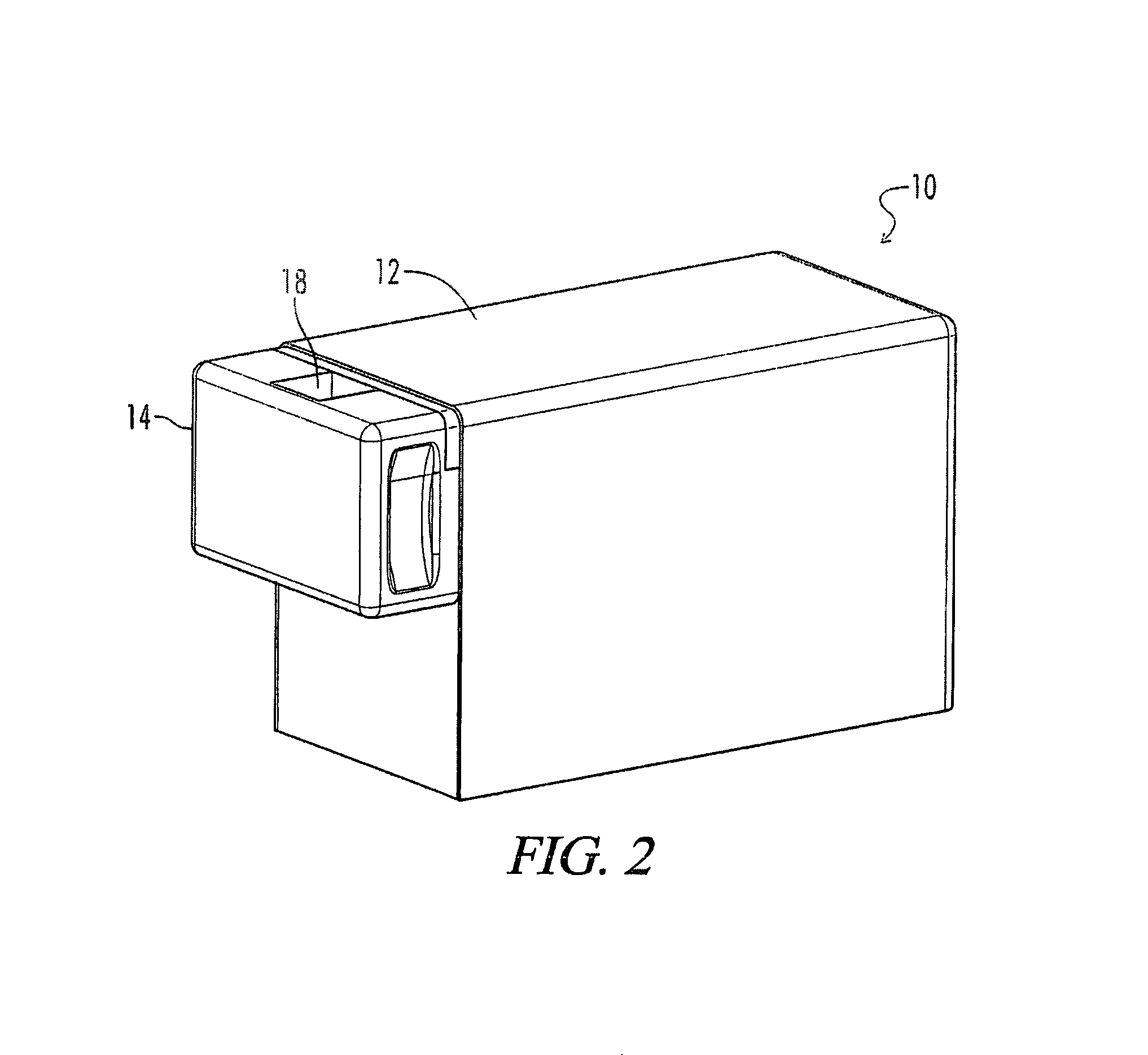Portable bone grinder
a bone grinder and portable technology, applied in the field of bone grinders, can solve the problems of inability to transform human bone into the needed bone tissue powder, prior art devices lack the ability to transform donated samples directly insufficient and efficient transformation of human bone into bone tissue powder, etc., to achieve convenient transportation of the grinder, easy cleaning, and simple operation
- Summary
- Abstract
- Description
- Claims
- Application Information
AI Technical Summary
Benefits of technology
Problems solved by technology
Method used
Image
Examples
Embodiment Construction
[0049]Referring now to FIG. 1 and FIG. 2 multiple embodiments of the bone grinder of the present invention are shown and generally designated by the numeral 10. Bone grinder 10 can be described as having main body 12 and cutter unit 14 with the embodiment as illustrated in FIG. 1 also including collection receptacle 16. Generally, main body 12 includes the mechanisms for converting electrical energy or pneumatic energy into mechanical energy for grinding the bone and further typically contain the electronics and necessary equipment for controlling and activating bone grinder 10 of the present invention. Cutter head unit 14 generally includes the actual cutter heads for grinding the bone as well as housing the heads in a removable body.
[0050]As is seen in FIG. 3 and FIG. 4, cutter head unit 14 which preferably includes bone input 18 as well as a bone output may be removable from main body 12 of bone grinder 10. In further embodiments, bone input 18 may be located elsewhere and possib...
PUM
 Login to View More
Login to View More Abstract
Description
Claims
Application Information
 Login to View More
Login to View More - R&D
- Intellectual Property
- Life Sciences
- Materials
- Tech Scout
- Unparalleled Data Quality
- Higher Quality Content
- 60% Fewer Hallucinations
Browse by: Latest US Patents, China's latest patents, Technical Efficacy Thesaurus, Application Domain, Technology Topic, Popular Technical Reports.
© 2025 PatSnap. All rights reserved.Legal|Privacy policy|Modern Slavery Act Transparency Statement|Sitemap|About US| Contact US: help@patsnap.com



